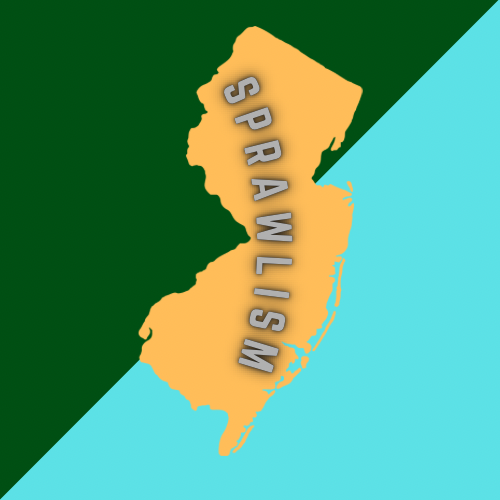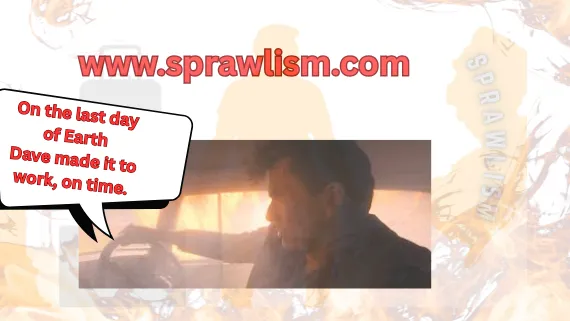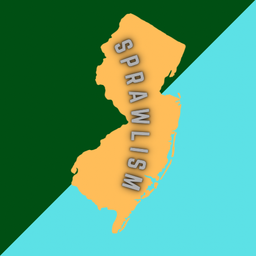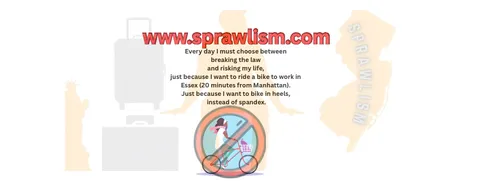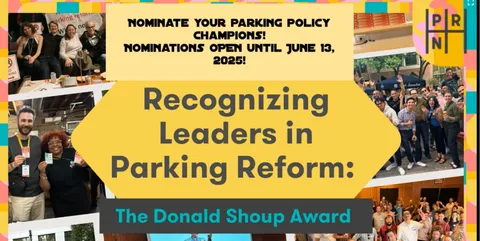As a feminist urbanist critic, I challenge the foundation-funded pervasive pathologizing narrative that cities must "protect" vulnerable groups. This framing is not only patronizing—reducing those of us who aren’t white men to "pets" requiring guardianship—it does not work to create good policy, owing to narrative framing theory. Meaning even if you want to solve a problem, by presenting it in an objectifying way (engaging objectification is addictive), you NORMALIZE the problem. It becomes part of a script people use for short cuts to perform subconscious biases. And finally, it antithetical to transformative design.
The climate crisis demands that we cease from thinking in silos and embrace complex systems and prosocial theories.
New Jersey is the United States of America’s most urban and dense state with a diversity of people, but its transit systems remain shackled to a single archetype—the 9-to-5 commuter (He’s white, salaried, & Central Business District-bound). This fiction erases the byzantine mobility realities of most residents.
Feminist urbanism is a lens, not a reductive binary comedy routine ("men do this, women do that"). One of our continued tasks is shifting the discourse from carceral interpretations of safety toward manumission from auto asphyxiation, market driven patriarchy and evolve in the following manner:
From "Is it safe?" to "Is it usable?"
From "Is it fast?" to "Is it accessible?"
From "Does it serve commuters?" to "Does it serve life?"
This reframing exposes how systemic failures—unaffordable housing, unsafe transit, inaccessible services—exclude HUGE swaths of the public and minimize our efforts on the climate crisis front.
These are not niche experiences, the material facts:
Median wage for NJ women: $38,000
Average wage for NJ Black residents: $38,000
Average wage for NJ Latine residents: $30,000
Average wage for NJ high school graduates: $35,000
Another point I want to add, because feminist urbanism planned by patriarchy for inclusive purposes LOVES the mother as woman paradigm.
Reducing women to "mothers" invokes many sinister ideas about subordination and rigid subservient gender roles. It erases women without minor children, retirees rationing medication, nonbinary students working night shifts, disabled individuals navigating broken infrastructure.
We must design for people—not a small number of capitalist tropes and roles.
This isn’t charity or mutual “aid.” It’s pragmatism. Systems built for everyone, rather than the most privileged elite functionaries, inherently serve all better—and are essential to climate survival.
Transportation drives approximately 40% of NJ’s emissions. When mass transit is marginalized, it forces reliance on cars. Unpartnered parents have to make endless trips to transport children, service workers endure 2-hour bus odysseys, elders cross highways for clinics in a real life version of Frogger.
These aren’t rare events but common and underserved by policy daily errands.
They’re the majority. We are the majority. Centering our transportation focus in the US and dismantling the silos that separate labor, housing, and transportation (because that makes funding easier) and demanding pluralism and working class solidarity isn’t radical—it’s the only path to a functional, just city and to design cities that truly challenge the climate crisis.
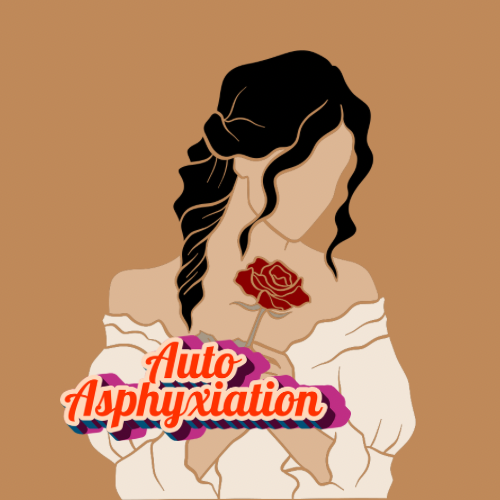
Solutions
- Transit that serves autonomy, not just productivity. Routes connect libraries, laundromats, community colleges, and public art spaces—places where people build lives, not just earn wages.
- Public spaces are designed for solitude and solidarity. Benches for resting alone, plazas for gathering, and quiet zones for reflection are integrated into transit corridors.
- Housing is decoupled from market speculation. Community land trusts and cooperative housing near transit prioritize residents who are often priced out—single women, queer folks, disabled people, and artists.
- Mobility is a right, not a reward. Free public transit is funded through progressive taxation, not fares—eliminating barriers for those who don’t fit the 9-to-5 mold.
- Remove means testing—requiring individuals to prove low income to access public services—undermines the very goals of equitable, low-carbon infrastructure. While often framed as fiscally responsible, it creates a two-tiered system that exacerbates sprawl.
Why This Cuts Emissions
- Non-work travel is climate-relevant. Errands, leisure, and social visits make up over 40% of urban trips. Ignoring these needs forces car dependency.
- Car-free living is impossible without dignity. If walking means harassment, biking means danger, and buses mean isolation, people will drive—even when they don’t want to.
- Market-driven housing fuels sprawl. When affordable housing is pushed to the margins, emissions rise. Centering non-nuclear households in planning reduces this.
4 Actions for New Jersey Today
- Continue to normalize and fund feminist infrastructure audits Assess transit and housing plans for how they serve non-nuclear, non-work-centered lives. Include historically excluded and marginalized communities.
- Create Non-Market Housing Near Transit Expand community land trusts and co-ops within walking distance of transit hubs. Prioritize residents excluded from traditional family models, but pilot non means based methods to accomplish.
- Design for Rest and Safety Install lighting, seating, and visibility features that make walking and rolling accessible for women and gender-diverse people—at all times.
- Decommodify Mobility Pilot fare-free transit in low-income, high-renter neighborhoods AND neighborhoods going through gentrification. We can’t continue to create two tier systems that enforce segregation and pushes sprawl. Fund it through congestion pricing, parking districts that use value capture, and luxury real estate taxes.
